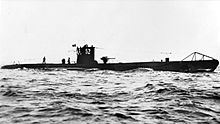| Revision as of 19:05, 8 December 2019 editGünniX (talk | contribs)Extended confirmed users313,085 editsm ReflistTag: AWB← Previous edit | Revision as of 10:13, 25 March 2020 edit undoXyl 54 (talk | contribs)Autopatrolled, Extended confirmed users, Pending changes reviewers, Rollbackers22,444 edits add tag; expand and re-writeNext edit → | ||
| Line 1: | Line 1: | ||
| {{under construction}} | |||
| {{Multiple issues| | {{Multiple issues| | ||
| {{disputed|date=April 2019}} | {{disputed|date=April 2019}} | ||
Revision as of 10:13, 25 March 2020
| This article or section is in a state of significant expansion or restructuring. You are welcome to assist in its construction by editing it as well. If this article or section has not been edited in several days, please remove this template. If you are the editor who added this template and you are actively editing, please be sure to replace this template with {{in use}} during the active editing session. Click on the link for template parameters to use.
This article was last edited by Xyl 54 (talk | contribs) 4 years ago. (Update timer) |
This article has multiple issues. Please help improve it or discuss these issues on the talk page. (Learn how and when to remove these messages)
|
The wolfpack was a mass-attack tactic against convoys used by German U-boats of the Kriegsmarine during the Battle of the Atlantic.
German submarines

Karl Dönitz called his strategy of submarine warfare Rudeltaktik, which literally translates as "pack tactic", but referred specifically to the hunting tactics of wolves and submarines were known by their nickname of "graue Wölfe" (grey wolves).
Tactics
U-boat movements were controlled by the Befehlshaber der Unterseeboote (BdU; English translation: "Commander of Submarines") much more closely than American submarines, which were given tremendous independence once on patrol. Accordingly, U-boats usually patrolled separately, often strung out in co-ordinated lines across likely convoy routes to engage individual merchants and small vulnerable destroyers, only being ordered to congregate after one located a convoy and alerted the BdU, so a Rudel consisted of as many U-boats as could reach the scene of the attack. With the exception of the orders given by the BdU, U-Boat commanders could attack as they saw fit. Often the U-Boat commanders were given a probable number of U-Boats that would show up, and then when they were in contact with the convoy, make call signs to see how many had arrived. If their number were sufficiently high compared to the expected threat of the escorts, they would attack.
Countermeasures

Although the wolfpacks proved a serious threat to Allied shipping, the Allies developed countermeasures to turn the U-boat organization against itself. Most notably was the fact that wolfpacks required extensive radio communication to coordinate the attacks. This left the U-boats vulnerable to a device called the High Frequency Direction Finder (HF/DF or "Huff-Duff"), which allowed Allied naval forces to determine the location of the enemy boats transmitting and attack them. Also, effective air cover, both long-range planes with radar, and escort carriers and blimps, allowed U-boats to be spotted as they shadowed a convoy (waiting for the cover of night to attack).
American submarines

American wolfpacks, officially called coordinated attack groups, usually comprised three boats that patrolled in close company and organized before they left port under the command of the senior captain of the three. "Swede" Momsen devised the tactics and led the first American wolfpack – composed of Cero (SS-225), Shad (SS-235), and Grayback (SS-208) – from Midway on 1 October 1943.
Cold War
Wolfpacks fell out of use during the Cold War; modern submarines have far better weapons and underwater speed than those of World War II, so there is no need for them to operate in large groups. Instead, the United States Navy deploys its attack submarines on individual patrols, with the exception of one or (rarely) two attack submarines in each carrier strike group.
American ballistic missile submarines have always operated alone, while Soviet ballistic missile submarines operated in well-protected bastions.
Post-Cold War
With the opening shots of the Iraq War in March, 2003, the term "wolfpack" was brought back into use to describe the fleet of American and British nuclear submarines which operated together in the Red Sea, firing Tomahawk missiles at Iraqi targets. USS Providence was the first boat to fire its entire load of missiles and earn the nickname "Big Dog of the Red Sea Wolf Pack."
Recently the phrase "wolfpack" has been applied to possible Iranian missile boat tactics in the event of a hypothetical clash with the U.S. Navy; a massive attack of small boats armed with missiles and torpedoes on a single ship, or even a few ships, in order to overrun or saturate the Aegis defense system. Such attacks allow the possibility of effective sacrificial boat deployment.
See also
- List of wolfpacks of World War II
- Convoy SC 7 for an account of one of the first Allied convoys to suffer a wolfpack attack
References
- Der Weg zu den "Grauen Wölfen, by Wolfgang Meyer. P.82"
- Peter Maas, The Terrible Hours: The Man Behind the Greatest Submarine Rescue in History (HarperCollins New York, 1999)
- E. B. Potter and Chester W. Nimitz, eds; Sea Power: A Naval History (Englewood Cliffs, N.J.: Prentice-Hall, 1960)
| U-boats | |||||
|---|---|---|---|---|---|
| U-boat lists | |||||
| Commanders | |||||
| Wolfpacks | |||||
| Major engagements | |||||
| U-boat flotillas |
| ||||
| Capital ships sunk |
| ||||
| Technology | |||||
| Concepts | |||||
| Bases |
| ||||